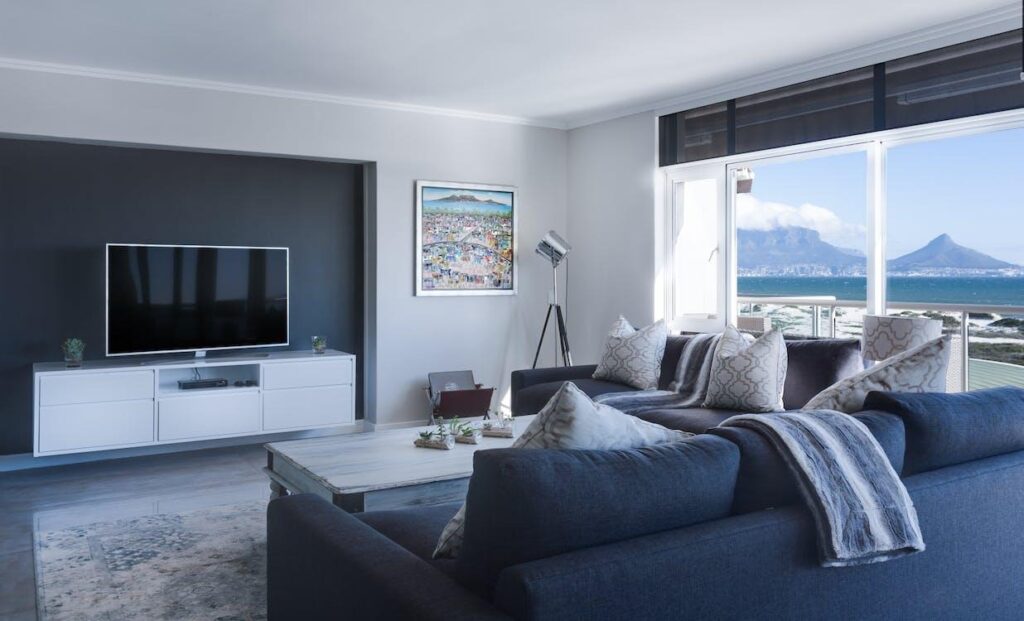TV Size Guide — What size television should you buy?
Television is not an idiot box anymore. It has become an important part of every home. Many an hour is spent in front of the screen, and right from toddlers to senior citizens, everybody has their own favourite program.
But buying a television is not an easy task. The wide range of options – brands, size, features, etc make the task of selection even more confusing and difficult. Your TV viewing experience is impacted by the size, picture quality, resolution, pixel size, etc. Most people prefer a Smart TV these days for obtaining a wholesome experience. With the advent of 4k and 8k models, even the minutest of pixels remain unnoticed, unlike the earlier 1080p HDTVs.
Budget is one of the factors playing an important role in selecting the television for your home. There’s a wide price range, right from the affordable lower end to the pricier luxury end. However, quality is not solely dependent on the price. It depends on a lot of factors.
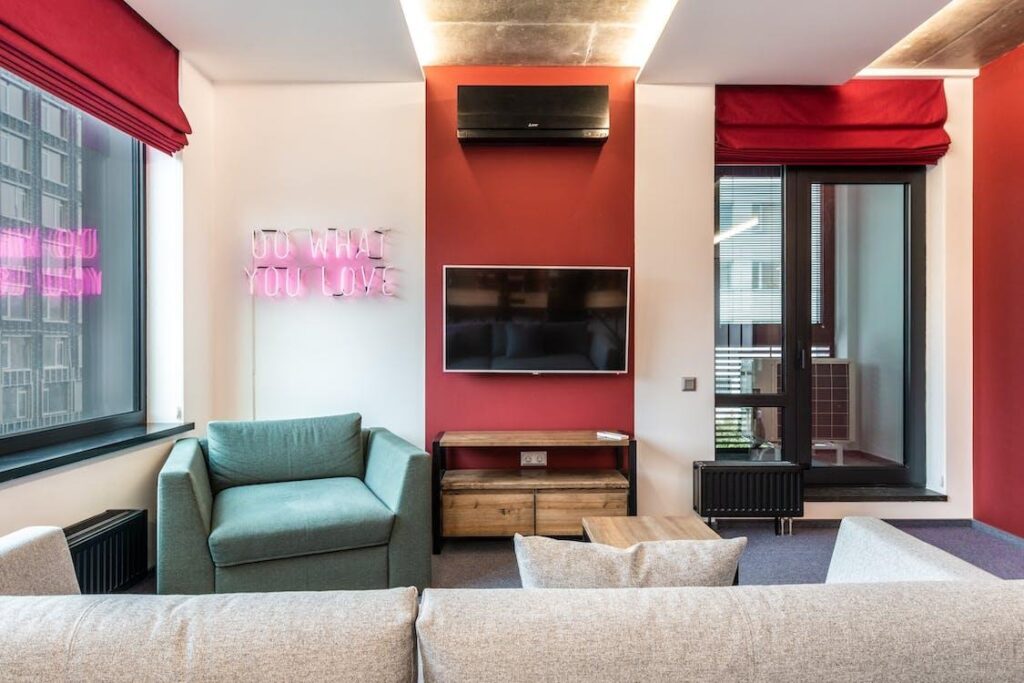
Apart from the budget, the size and positioning of the TV should be given due consideration as well. The wrong size or incorrect placement of the TV would prove ineffective and ruin your experience.
The large 65-inch television looks tempting in the showroom and fits your budget too. But would it be a good buy? How will you decide on the correct TV size?
The size of the TV depends on a lot of factors. In this article, we explore this aspect in detail.
Space Availability

You can opt for a larger or smaller-sized television depending on where you are going to mount it and how much space is available.
The placement area – whether it is the living room or the bedroom, impacts the size of the television. Usually, bedroom televisions are smaller in size compared to the ones in the living room.
Depending on the space, you can either mount the television on the wall or place it on a cabinet.
Size matters
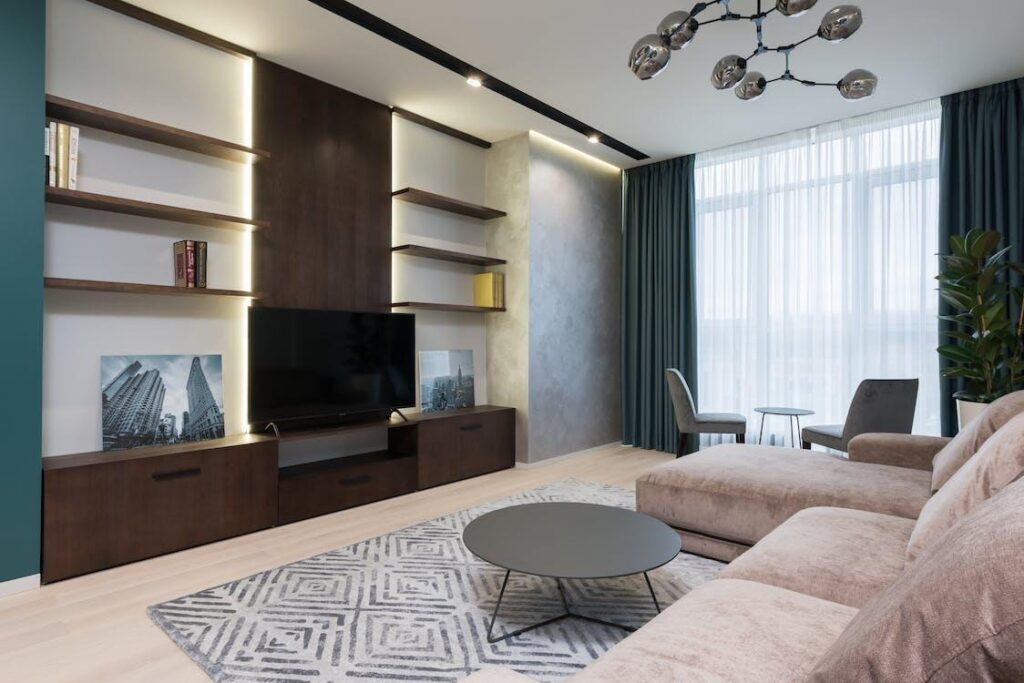
Though TVs are available in many sizes, the most common sizes are 32, 40, 42, 50, 55, and 65 inches. The size is measured diagonally from one corner to another.
The dimensions of the room play an important role in deciding the size of the TV. A large TV would look out of place in a smaller room. It would make the space more cramped and viewers would find it uncomfortable.
Similarly, a small room would appear insignificant in a large room. It would strain the eyes of the people watching the TV and create a dissatisfactory viewing experience.
How to Measure the Size
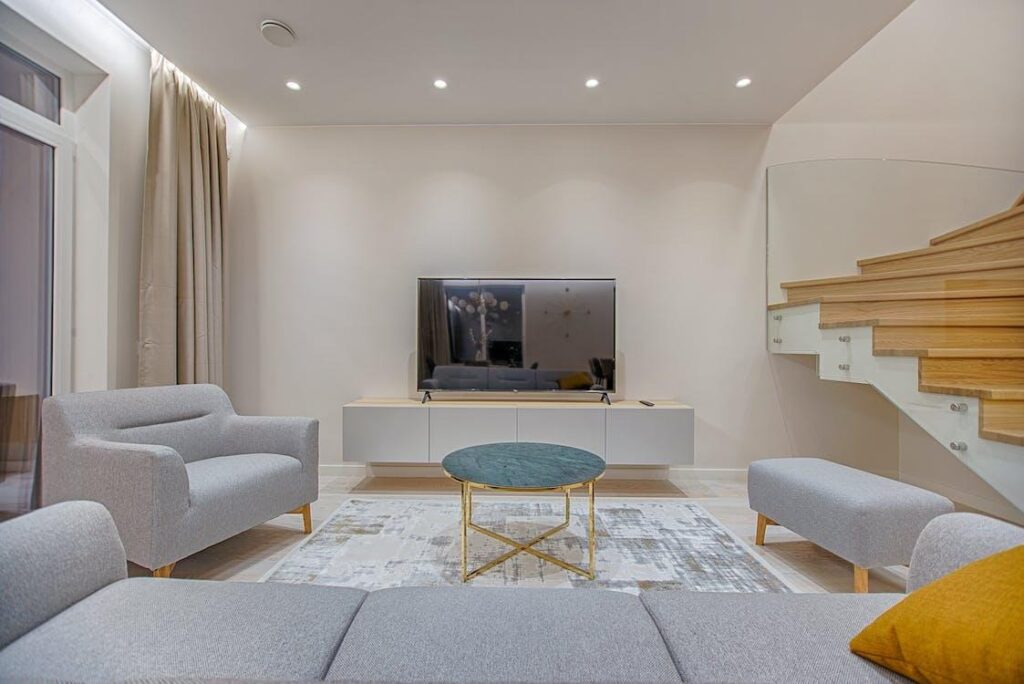
Determining the correct size depends on the available space, proportions of furniture and other items, seating arrangement, viewing size, and viewing preferences.
Measuring the correct screen size is fairly simple. We share a simple formula that you can use to arrive at the size.
Measure the distance (in inches) between the couch/ sofa and the place where you plan to place your television. Once you have this number, divide it by 2. And that number is the size of your TV screen.
e.g., if the distance between the couch and the wall/display unit is 110 inches. Divide it by 2, and a TV measuring 55 inches will fit perfectly in your living room.
However, in the case of bedrooms, the calculation is slightly different.
You have to measure the distance between the wall / display unit and pillow in inches. By measuring the distance to the pillow, you are including the size of the bed. Not including the length of the bed would give you a wrong figure, and you would end up with a wrong-size television.
Placement
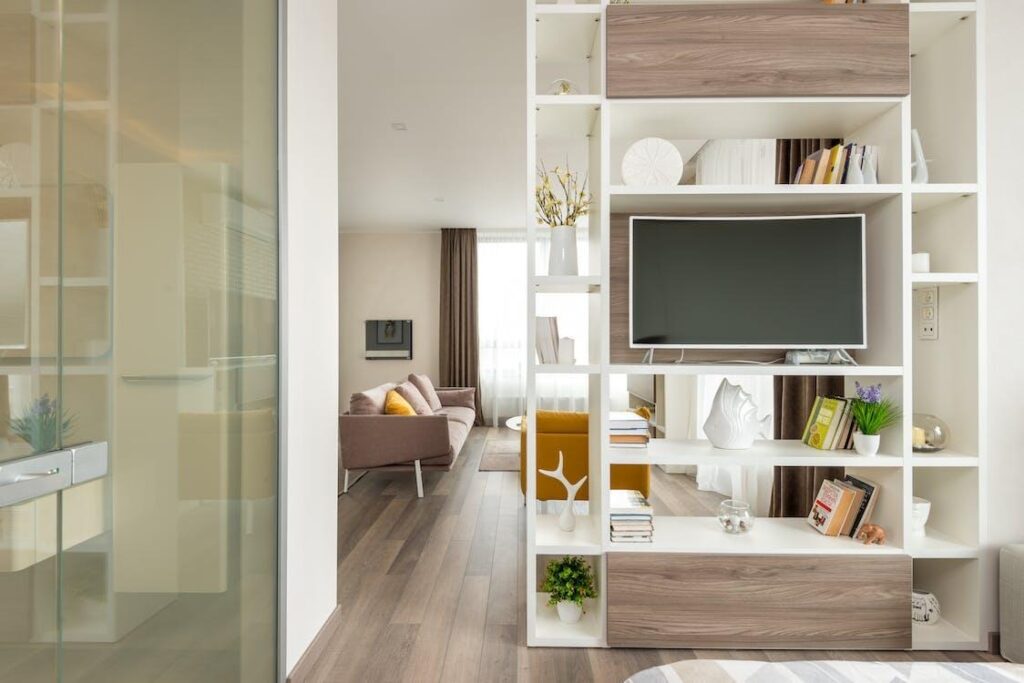
The TV should be placed at the correct height and angle. Improper placement not only negatively impacts the viewing experience, but it can also cause eye strain, or lead to back or neck cramps.
TV should be at eye level or slightly lower. An optimum vertical viewing angle between 0 to 15º ensures maximum comfort.
LED TVs should be placed parallel to the eyes. If the TV is placed at sharp angles, it will cause image distortion.
In the case of a 42-inch screen, there should be a gap of 56 inches between the floor and centre of the TV.
If you are planning to wall mount your television, ensure it is mounted at a proper viewing angle. While it is best to maintain a straight angle between the viewers and the screen, it depends on your personal preference and comfort.
Seating Distance

The optimal seating distance determines how far the seating area should be from the television. It depends on your comfort, preference, and layout.
You wouldn’t want to sit too close to the screen. At the same time, you don’t want to be seated so far that you are squinting at the screen.
Ideally, if there’s a distance of 7 – 8 feet between the TV and the seating area, a 32 inches TV screen would be a good buy.
The larger the distance, the larger can be the screen size.
If you are planning to get a 65-inch screen, a viewing distance of 13 feet would be considered as being comfortable.
These days most of the screens are 4k ultra-HD. This superior technology ensures a good viewing experience even if you are sitting close to the television.
Let us know if you found this article helpful. We would love to hear from you!
